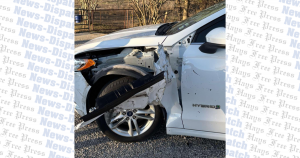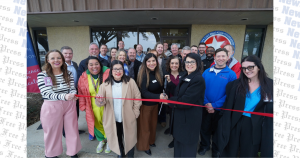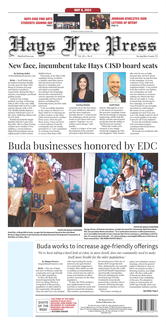By Moses Leos III
Legendary head coach Bob Shelton feared the worst when he was hailed from the locker room at halftime of the 1996 regular season finale.
It was a strange request, as the Hays Rebels were in the midst of capping off an unblemished regular season.
“They called me out of the locker room,” Shelton said. “I thought there was a problem on the field.”
Unbeknownst to the longtime head coach, the district had something else in mind.
On that night, the stadium known as Rebel Field was no more. Shelton was given the honor of having the field named after him. It’s a moment Shelton never takes for granted.
“That was quite a thrill to have that happen. All of my family was there; my mom was there,” Shelton said. “It was a nice thing. It was really a nice gesture for the school board to do that.”
The history of Shelton Stadium goes beyond that one night in 1996. One has to go back to 1968, the year Hays High first opened, to understand the legacy.
That year was a contentious time for the cities of Buda and Kyle. Up until then, each town had its own high school. And, as history often dictates, little love was lost between the two football rivals.
Buda High students took pride in their field, which was situated near what is now the upper campus of Buda Elementary. It held the distinction of being the second field to incorporate stadium lights in Hays County.
“It was a good field,” Shelton said. “Of course, it didn’t sit that many people.”
Things changed in the fall of 1968. By that time, Buda and Kyle School Districts consolidated, forming Hays CISD and subsequently Hays High.
However, the move was vastly unpopular. Bridging the divide between the two towns proved a challenge.
“The problem was trying to get the communities together,” Shelton said. “Buda and Kyle were always bitter enemies. It was hard to get the community together to support a team.”
It wasn’t until the final game of the 1968 season that the communities came together. The Rebels needed a win over second ranked Randolph High to secure the district title.
While Hays fell 38-24, the moment brought a change in the dynamic of the school. It soon changed the face of Rebel Field.
“That game did so much to bring the community together,” Shelton said. “I thought it meant a lot.”
Rebel Field soon became the meeting place for Kyle and Buda residents in 1969. All were together in their solidarity to support the Rebels, even during Hays’ early struggles. Between 1968 and 1973, Hays went 23-36-1.
By the mid-1970s the team’s luck changed. Starting with a 7-3 1974 campaign, the Rebels soon found success. Hays claimed its first district title in 1976.
“That was a big year for us,” Shelton said.
As the team improved, the stadium and fan base also grew. From a humble 2,000-seat stadium, Rebel Field expanded to seat nearly twice that number by the 1980s.
By the 1990s and into the 2000s, Shelton Stadium housed over 7,000 fans, with nary a seat to be found on the old home bleachers.
Changes started to occur in the early 2000s. Shelton Stadium underwent a year long renovation in 2002.
That allowed for the stadium to increase capacity to 8,600 fans. The stadium also gained a major face lift. A multilevel press box was built on the east side of the stadium.
Change came again in 2007, when Lehman High began to play football.
While the towns of Buda and Kyle were divided again, both schools were able to find ways to share Shelton Stadium. It’s a feat both teams continue to this day.
However, with all of the changes that have happened, losing the grass surface meant the most to the Shelton.
“I felt like when we had a grass field, we had a big advantage playing at home. What’s funny is when we put [in] the turf, we lost that for a few years,” he said. “We eventually got it back, but it took some time.”









